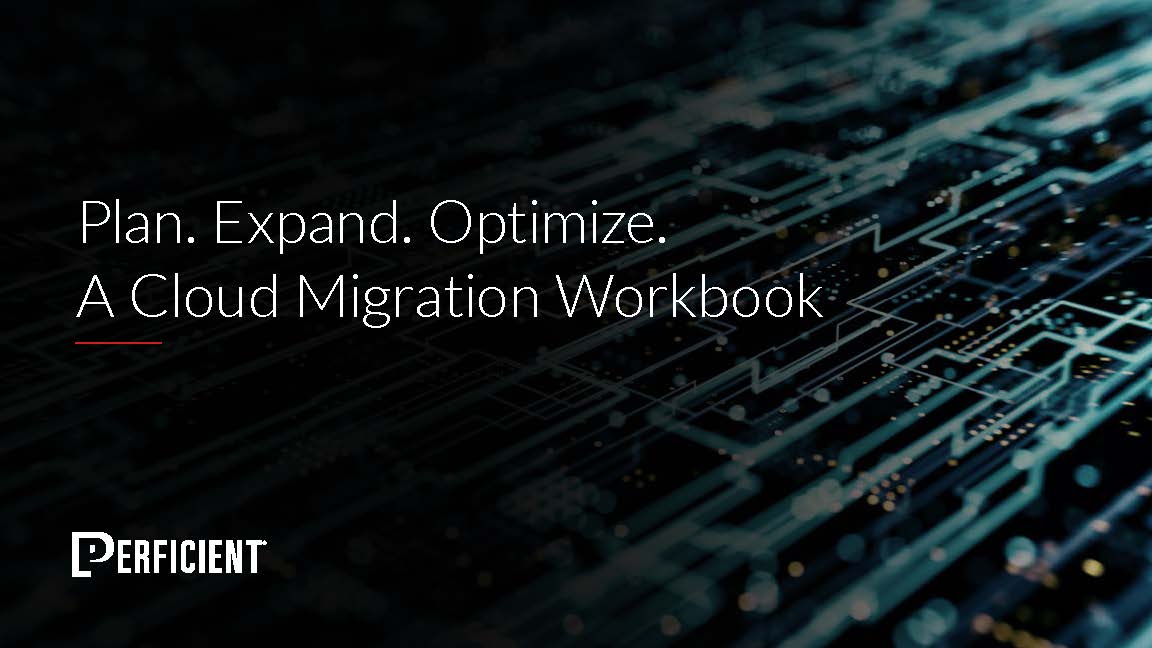Introduction
In recent years, cloud computing has revolutionized the way businesses manage their IT infrastructure. It offers unparalleled scalability, flexibility, and cost-effectiveness. However, with the convenience of the cloud also comes the challenge of optimizing cloud costs. This is where Cloud Financial Operations (FinOps) plays a crucial role. Cloud FinOps is the practice of effectively managing and optimizing cloud spending to ensure maximum value for your investment. In this blog, we will highlight five specific strategies for Cloud FinOps, focusing on autoscaling, budgets, reservations, monitoring for under-utilized resources, and architecting systems for cost efficiency.
1. Autoscaling for Optimal Resource Allocation:
One of the primary benefits of the cloud is the ability to scale resources up and down based on demand. Autoscaling enables your infrastructure to automatically adjust resources to meet changing workloads, thus avoiding over-provisioning or under-provisioning of resources.
-
- Elastic Load Balancing: Implementing Elastic Load Balancing services in your cloud architecture ensures that incoming traffic is distributed efficiently across multiple instances. This concept is frequently also referred to as “Horizontal Scaling”. As traffic fluctuates, the system can automatically add or remove instances to match demand, optimizing resource utilization and reducing costs during periods of low activity.
- Configuring Autoscaling Schedules: For certain services that must scale vertically due to increased resource demands at specific times, configuring autoscaling schedules can be beneficial. With autoscaling schedules, you can proactively plan and adjust resources based on known usage patterns. For example, if your application experiences a surge in traffic during certain hours, you can configure automated rules that proactively scale the infrastructure before the expected spike and scale down afterward, thus optimizing resource allocation and reducing costs during off-peak hours.
One of the most important design decisions when configuring autoscaling is selecting the right metrics to use for the scaling rules – each system is unique, and while some applications may require heavy compute, others may need more memory or storage to operate efficiently. It is highly recommended to perform structured load tests to find the metrics and settings that are specific to your system and identify the proper data points to use for configuring autoscaling rules and/or schedules. To read more about load testing take a look at the article here: https://blogs.perficient.com/2023/02/22/moving-to-the-cloud-heres-what-you-need-to-load/
2. Budgets: Setting Financial Limits and Alarms
Managing cloud costs effectively involves setting budgets and closely monitoring your expenses. Budgets act as cost guardrails, ensuring you remain within your allocated spending limits and preventing unexpected financial surprises.
-
- Cost Allocation Tags: Assign cost allocation tags to resources and services, enabling better visibility into specific cost centers or projects. By categorizing expenditures, you can track how each component contributes to overall expenses, making it easier to enforce budgetary restrictions.
- Budget Alerts: Configure budget alerts to receive notifications when costs approach or exceed defined thresholds. This proactive approach allows your team to take immediate actions, such as optimizing resources or scaling down underutilized instances, to avoid cost overruns.
Gartner estimates that public cloud bills are often two to three times higher than expected and that as many as 80% of companies surveyed report that they consistently go over budget on their cloud spending. No different than finances in any other business, knowing where you are spending money and being able to itemize every expense is critical to making informed decisions.
3. Monitoring and Eliminating Under-Utilized Resources
Identifying and addressing under-utilized resources is crucial for optimizing cloud costs. Many organizations often overlook this aspect, leading to unnecessary expenses and reduced cost efficiency. Unfortunately it is all too common for teams to provision a testing environment and then leave it running after they are finished. Or build a development environment the same size as their production simply because that was what the design specifications called for. It is critical to regularly rationalize your cloud environments and look for places to reduce tier sizes or de-provision un-used resources.
-
- Cloud Resource Monitoring: Utilize comprehensive monitoring tools to assess the performance and utilization of your cloud resources continuously. Analyzing metrics such as CPU utilization, memory usage, and network traffic helps you identify instances or services that are underperforming or not being fully utilized.
- Rightsizing Instances: Based on the monitoring data, consider rightsizing your instances by selecting the appropriate instance types that match the actual workload requirements. Upsizing or downsizing instances can significantly impact cost savings without sacrificing performance.
4. Sign Up for Savings Plans or Reservations
Reservations and Savings Plans are cost-saving mechanisms offered by major cloud providers (e.g., AWS, Azure, Google Cloud) that allow you to commit to using specific resources over a defined period at a discounted rate. By leveraging these options, you can optimize your cloud spending and reduce costs significantly. Here’s how to utilize Reservations and Savings Plans effectively:
-
- Reservations: Reservations allow you to commit to using specific resources, such as virtual machines (EC2 instances in AWS or VMs in Azure) or databases, for a fixed term (usually one or three years). In return, you receive a significant discount compared to the pay-as-you-go on-demand pricing.
- Savings Plans: Savings Plans offer more flexibility than Reservations. With Savings Plans, you commit to a specific dollar amount per hour for a particular type of usage (e.g., compute, EC2 instances). Savings Plans offering lower prices compared to On-Demand pricing, in exchange for a specific usage commitment (measured in $/hour) for a one- or three-year period. Savings Plans automatically apply discounts to any usage that matches the attributes of the plan, regardless of the specific instances used.
Reservations or savings plans typically involve some sort of long-term commitment. So it is essential to engage a knowledgeable cloud architect for planning reservations and utilize their expertise, strategic planning capabilities, and technical knowledge for implementing Reservations or Savings Plans efficiently, maximizing cost savings, and ensuring a well-optimized and cost-effective cloud infrastructure.
5. Re-Architecting Applications for Efficiency and Cost Savings
While autoscaling, budgets & reservations, and monitoring help optimize your existing cloud infrastructure, after all of these low-hanging fruit have been identified or remediated, the next optimization strategy involves re-architecting applications to improve efficiency and leverage more cost-effective services.
-
- Designing for Lower Tiers: Many cloud providers offer multiple tiers of services, each with varying levels of performance and cost. Re-architecting applications to utilize lower tiers can significantly reduce expenses without compromising functionality. For example, opting for lower-tier database or storage services might be sufficient for certain applications, resulting in considerable cost savings.
- Leveraging Serverless and Platform as a Service (PaaS): Serverless computing and PaaS models enable you to focus on application development while the cloud provider manages the underlying infrastructure. By adopting these services, you can reduce operational overhead and only pay for the actual resource consumption, further optimizing your costs.
- Microservices and Containerization: Refactoring monolithic applications into microservices and deploying them using containerization (e.g., Docker) allows for better resource utilization. Containers are lightweight, scalable, and can be efficiently distributed across instances. This approach ensures that you use resources more efficiently, leading to cost savings and improved performance.
- Optimizing Workflows: Examine the workflow of your applications to identify areas where improvements can be made. For example, reducing data transfers between components or using caching mechanisms can minimize resource consumption and reduce the cost of data processing.
- Rationalize Data Storage and Tier Sizes: Review your data storage strategies and consider moving infrequently accessed data to lower-cost storage options. Cloud providers often offer different tiers of storage, such as standard storage, infrequent access storage, and archival storage, each with varying costs.
- Identify Duplicate Services: Look for services or resources that have identical functions and purposes. Often, teams within an organization might create separate instances of the same service without knowing that it already exists elsewhere. Comb through your cloud infrastructure to find such duplicated services and consolidate them.
Re-architecting applications to make them more efficient and cost-effective is a proactive strategy for cloud cost optimization. By leveraging lower tiers of cloud services, embracing serverless and PaaS offerings, adopting microservices and containerization, and optimizing workflows, businesses can achieve substantial cost savings while maintaining the performance and scalability needed to meet user demands.
This final strategy requires engineers with deep knowledge of the respective cloud platforms – and this is where consulting partners like Perficient can add great value! We have dedicated teams who work in cloud environments every single day as well as 50+ certified cloud architects. If you would be interested in engaging with Perficient to learn more about our capabilities and how we can help you achieve cost optimization in your cloud environments, check out some of our strategic offers here: https://www2.perficient.com/cloud-offers#section-2
Conclusion
In conclusion, Cloud FinOps is an integral part of managing your cloud infrastructure effectively. By adopting specific strategies like autoscaling, budgets, and monitoring for under-utilized resources, businesses can maximize cost efficiency, optimize resource allocation, and avoid unnecessary expenses.
Remember that cloud cost optimization is an ongoing process. Continuously monitor your spending, analyze usage patterns, and adjust your strategies accordingly. By doing so, you can reap the full benefits of cloud computing while maintaining financial prudence and driving greater business success.


Great tips! Cloud costs can add up quickly if not managed properly. I especially like the suggestion to use auto-scaling to adjust resources based on requirement .
Your article on maximizing cloud cost efficiency offers essential insights for Cloud FinOps. These five strategies are concise and actionable, making it easier for businesses to optimize their cloud spending. I particularly appreciate the emphasis on regularly reviewing and adjusting resources, which can result in significant cost savings. The article serves as a valuable resource for organizations looking to harness the power of the cloud without breaking the bank